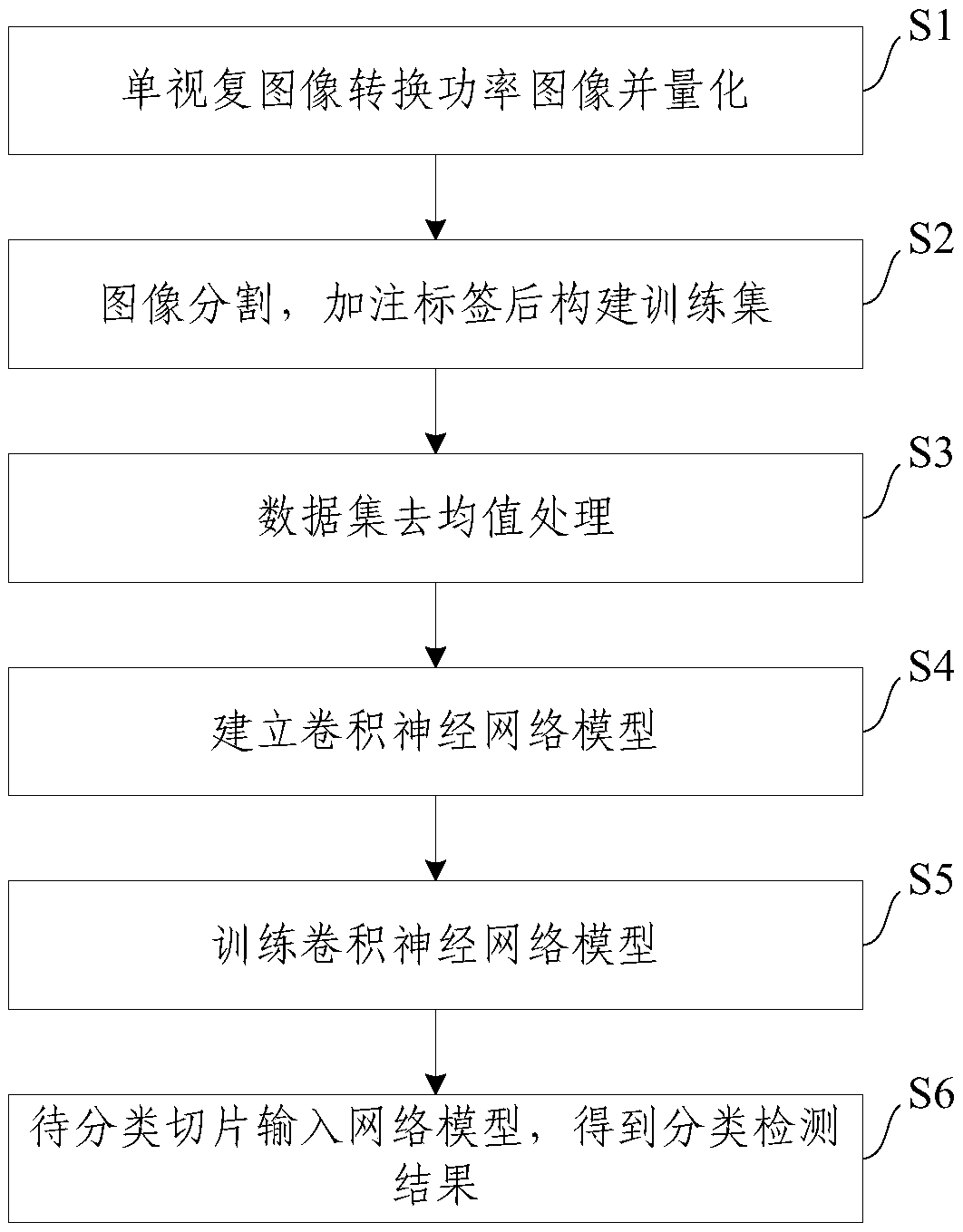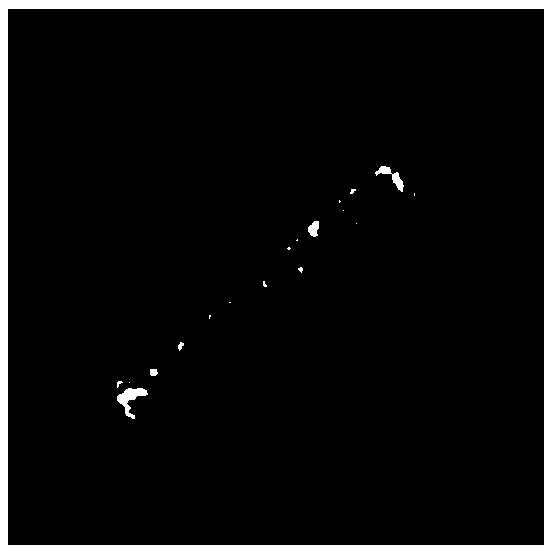Classification detection method for marine targets in SAR image based on convolution neural network
A convolutional neural network and target classification technology, applied in biological neural network models, neural architectures, instruments, etc., can solve problems such as unreasonable network structure, low algorithm practicability, and small number of samples, and achieve strong generalization ability, The effect of strong portability and simple structure
- Summary
- Abstract
- Description
- Claims
- Application Information
AI Technical Summary
Problems solved by technology
Method used
Image
Examples
Embodiment
[0080] This embodiment proposes a method for classifying and detecting SAR marine targets based on a convolutional neural network. This embodiment specifically includes the following steps:
[0081] Step 1: Perform power image conversion and quantization on the SAR single-view complex image to obtain;
[0082] Specifically:
[0083] According to the formulas (1) and (2), 60 GF-3 single-view complex images with a size of 16384×16384 can be used to obtain quantized SAR images, one of which is as Figure 4 As shown; a large number of training set samples and a suitable network structure are prerequisites for convolutional neural networks to achieve better classification results. The present invention provides a large number of training samples for the convolutional neural network by using, for example, a large number of SAR images of the Gaofen-3 radar satellite.
[0084] Step 2: Segment the high-resolution SAR image containing marine targets (that is, the quantized SAR image o...
PUM
 Login to View More
Login to View More Abstract
Description
Claims
Application Information
 Login to View More
Login to View More - Generate Ideas
- Intellectual Property
- Life Sciences
- Materials
- Tech Scout
- Unparalleled Data Quality
- Higher Quality Content
- 60% Fewer Hallucinations
Browse by: Latest US Patents, China's latest patents, Technical Efficacy Thesaurus, Application Domain, Technology Topic, Popular Technical Reports.
© 2025 PatSnap. All rights reserved.Legal|Privacy policy|Modern Slavery Act Transparency Statement|Sitemap|About US| Contact US: help@patsnap.com



